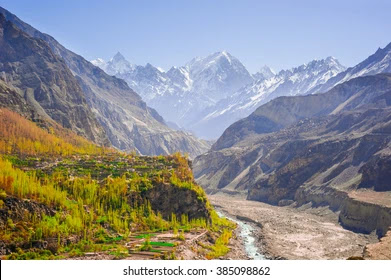Introduction (Geography):
Let's delve into the hidden allure of the Hindu Kush Mountains and their pivotal role in Pakistan's tourism. Stretching over 35,000 kilometers, this Himalayan region traverses eight countries: Pakistan, Afghanistan, Bangladesh, Bhutan, China, India, Nepal, and Myanmar. Revered as magnificent water towers, the Hindu Kush Mountains are the source of ten major rivers in Asia, serving essential functions such as providing drinking water, irrigation, energy, and supporting industries.
Tourism:
Contrary to popular belief, the local Pakistani population is largely unaware of the astounding beauty these mountains hold. However, my visit revealed the immense tourism potential of these Himalayan wonders, particularly for winter sports festivals. Despite the lack of adequate accommodations and basic infrastructure in the Madaklasht Valley and its surroundings, I embarked on a three-day adventure filled with exhilarating hikes and unforgettable encounters. As a novice skier, I eagerly joined the locals, immersing myself in the joy and laughter that echoed through the vast skiing area of these majestic mountains. The experience was beyond words, igniting a newfound love for winter sports. Additionally, the Hindu Kush Mountains offer countless opportunities for other snow sports such as Snowboarding, Alpine skiing, Ice Hockey, Biathlon, and Cross-country skiing.
Excitingly, the former Prime Minister of Pakistan, Imran Khan, announced in 2020 that the next international skiing festival would be held in Madaklasht Valley. To my delight, the 2021 international skiing festival graced this breathtaking valley, marking a remarkable departure from its usual venue, Malam Jabba Swat.
Climate:
A distinguishing characteristic of the Hindu Kush Mountains is their role as a significant climatic divider, demarcating distinct climate zones across Asia. This topographical feature gives rise to substantial climatic variations within the region. While Swat Kohistan's mountains are embraced by the rain-bearing summer monsoon winds, the eastern Hindu Kush showcases diverse climate patterns. The southern slopes of the eastern and central Hindu Kush are blanketed by forests that receive abundant snowfall during winter and intermittent rainfall during the summer monsoon season.
By immersing myself in the splendor of the Hindu Kush Mountains and experiencing their unique climate, I gained a profound appreciation for the natural wonders that grace this remarkable region.




good
ReplyDelete